longlistshort
2K posts
Don't wanna be here? Send us removal request.
Text
youtube
Traps PS- Peer Review
This song is from LA band Traps PS‘s 2025 album, Abstractor.
They will be playing at The Smell in Los Angeles on Friday 6/20/25, with The Two Seasons and Practice. The show is a benefit for Immigrant Defenders Law Center.
#Traps PS#Song of the Day#Music Monday#Los Angeles Music#Immigrant Defenders Law Center#Los Angeles Music Shows#Music#New Music#Playlist#Practice#The Two Seasons#Youtube
0 notes
Text
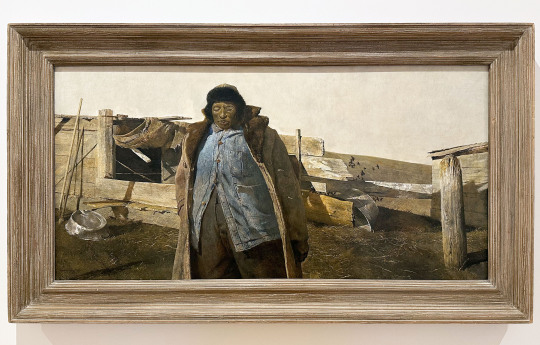

“Adam”, 1963, Tempera on panel
The Brandywine Museum of Art is currently showing Human Nature, a selection of work by Andrew Wyeth focused on the human form. The museum has an extensive collection of the artist’s paintings and often has shows focused on him and his artistic family.
From the museum about this exhibition-
One of the artist Andrew Wyeth’s enduring legacies is his highly original response to the subject of the human body. Alongside his iconic landscapes and visionary responses to buildings, botany, and beyond, his figure paintings and drawings offer particular insight into how this unique creative journey took shape, and how he was connected to the history of art. The rarely seen paintings and drawings on view in Human Nature reveal an artist who was steeped in the tradition of Western art, engaged in a diligent study of the human form via the long-tested methods of sketching from live models and plaster casts, and who found in his portrait subjects ways of evoking enigmatic narratives and inner lives. The works in this exhibition, drawn from the Brandywine and Wyeth Foundation collections as well as one exciting loan from a private collection, present a unique opportunity to understand Wyeth’s eye. Case studies include early figure drawings made in his father’s studio, self-portraits, intimate depictions of close family members, a little known and fascinating body of commissioned portraits, a broad representation of his mature practice including many major figural temperas and watercolors, and a final section on how he approached the nude figure. One highlight is the loan of Wyeth’s portrait of Professor Joyce Hill Stoner, a leading art conservator who shares in the exhibition’s wall texts some firsthand reflection on the process of being painted by Wyeth. Visitors will come away with new understanding of a remarkable lifelong practice that clarifies the operations and values at work across his art.
The painting above is of Adam Johnson who raised chickens and pigs a short walk from Wyeth’s studio in Chadds Ford. When this was painted, Wyeth had already known him for thirty years. Other interesting paintings in the show include the two very different portraits of Wyeth’s sister Ann, from earlier in his career, pictured below.

“Ann Wyeth in White”, 1936, Oil on canvas
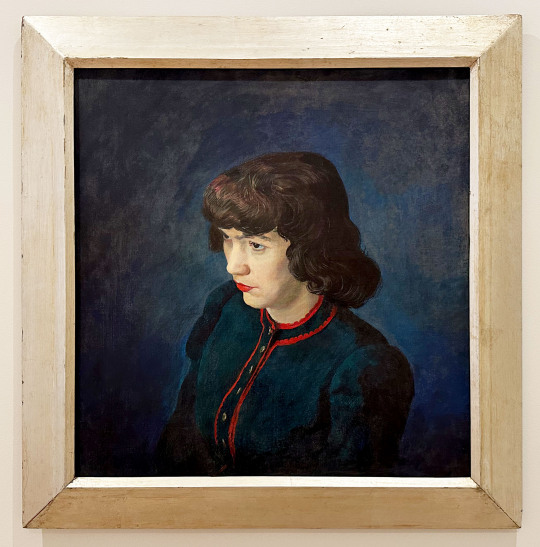
From the museum about these two works-
As a young artist, Wyeth made a few dozen works in oil on canvas before abandoning this medium for good. There is a stark difference between the two portraits of pianist and composer Ann Wyeth, the artist’s sister, made three years apart. This depiction is handled very freely, in contrast to the more tightly painted tempera to the right, in which the artist and, by extension, the viewer loom over the subject in a most unsettling way while Ann Wyeth ignores our gaze in her peripheral vision.
This exhibition closes 6/15/25. A new exhibition of Wyeth works, Andrew Wyeth at Kuerner Farm: The Eye of the Earth, will open on 6/22.
#Andrew Wyeth#Brandywine Museum of Art#Art#Art Shows#Chadds Ford#Drawing#Painting#Pennsylvania Art Shows#Pennsylvania Museum
3 notes
·
View notes
Text



This mural was created in 2019 by Tomokazu “Matzu” Matsuyama as a commission for The Houston Bowery Wall in NYC.
Matsuyama recently completed the painting Morning Sun Dance, inspired by Edward Hopper’s 1952 painting, Morning Sun. An exhibition of his paintings and works on paper centered around this new work opens at Edward Hopper House Museum in Nyack, New York, on Friday, 6/20/25.
From the museum about the exhibition-
The exhibition centers around Matsu’s new large-scale painting Morning Sun Dance. Of the work that inspired his painting, Matsu says, “While Hopper’s Morning Sun captures a moment of introspective stillness within the psychological landscape of mid-century urban life, his treatment of solitude, light, and constructed space continues to influence my own approach to thinking about isolation as well as my approach to painting.” In Morning Sun, Hopper depicts a woman sitting on her bed in the sun, alone in an empty room, wearing a plain orange dress and a simple, contemplative expression. In Morning Sun Dance, Matsu paints a solitary woman with a similarly meditative demeanor. However, her environment is far more richly layered: the room is filled with personal artifacts—dogs, magazines, and a luxurious couch—reflecting contemporary material life. Notably, the presence of dogs, while suggesting companionship, also references historical depictions such as Toutou, le bien aimé by Rosa Bonheur (1885) and A Nurse and a Child in an Elegant Foyer by Jacob Ochtervelt (1663), in which dogs symbolized wealth and ownership. In Matsu’s work, these animals subtly underscore solitude rather than alleviate it—suggesting not connection, but the heightened self-awareness of being alone.
Her clothing fuses Western and Japanese motifs—a William Morris textile layered with traditional patterns—while a Sports Illustrated poster of Muhammad Ali nods to her alignment with diversity, strength, and modern identity. In contrast to Hopper’s figure, who gazes outward toward the cityscape, Matsu’s subject turns inward, facing her domestic space. This shift in gaze implies a broader narrative: solitude, once externalized and meditative, is now negotiated through personal space and cultural consumption. The exhibition will also feature Matsu’s process drawings, which reveal how the artist engaged with Hopper’s use of light, figuration, and abstraction. Two additional smaller paintings by Matsu also reinterpret Hopper’s iconic figure in the orange dress—one from Hopper’s original perspective, and the other from an external vantage point, as if observing the figure from the outside. “This exhibition offers a fascinating dialogue between two artists from different eras, both grappling with the complexities of modern life and the experience of solitude,” says Kathleen Motes Bennewitz, Executive Director of the Edward Hopper House Museum. “Matsu’s vibrant and layered response to Hopper’s work invites us to reconsider themes of isolation and introspection through a contemporary lens, highlighting the enduring relevance of Hopper’s vision while embracing new perspectives.”
#Tomokazu Matsuyama#Painting#Tomokazu “Matzu” Matsuyama#The Houston Bowery Wall#Edward Hopper#Edward Hopper House#Edward Hopper House Museum#Matzu#Art Show#Morning Sun#New York Art Shows#Nyack Art Shows#NYC Public Art#NYC Street Art#Public Art#Art
0 notes
Text
youtube
The Beach Boys- Good Vibrations
Brian Wilson, musician, singer, songwriter and producer passed away today at 82. As a member of The Beach Boys he helped create some of the most famous music of 1960s America, and also arguably one of the best and most influential albums ever made, Pet Sounds.
Good Vibrations was released as a single the same year as Pet Sounds but was left off the album. It is one of the songs that best exemplifies Wilson’s unique production style.
A little more on the song from Wikipedia–
Promoted as a “pocket symphony” for its complexity and episodic structure, the record had an unprecedented production and expanded the boundaries of popular music, elevating its recognition as an art form and revolutionizing standard practices in studio recording. It is considered one of the greatest works of rock, pop, and psychedelia. Wilson was inspired by the concept of extrasensory perception, Phil Spector‘s production of “You’ve Lost That Lovin’ Feelin’“, and recreational drugs, possibly including LSD, in creating the song. He produced dozens of music fragments (or “modules”) with his bandmates and over 30 session musicians across four Hollywood studios from February to September 1966. Over 90 hours of tape was consumed, with production costs estimated in the tens of thousands of dollars, making it the costliest and longest-to-record pop single at the time. The resulting track subverted traditional songwriting conventions through its use of development, a process normally associated with classical music, and abrupt shifts in texture and mood. One of the most influential pop recordings in history, “Good Vibrations” advanced the role of the studio as an instrument and effectively launched the progressive pop genre, heralding a wave of pop experimentation and the onset of psychedelic and progressive rock. The track incorporated a novel mix of instruments, including cello and Electro-Theremin; although the latter is not a true theremin, the song’s use of the instrument spurred renewed interest in theremins and synthesizers. The flower power-inspired lyrics reinforced the Beach Boys’ association with the 1960s counterculture, while the phrase “good vibes”, originally a niche slang term, entered mainstream usage.
Rest in Peace.
1 note
·
View note
Text
youtube
Taylor Mac's 24-Decade History of Popular Music Trailer
In 2016, Taylor Mac performed his immersive 24-Decade History of Popular Music in a theater in Brooklyn for a full twenty four hours. Normally performed in sections, this was the first and only time this had been done. Decade by decade, from 1776-2016, the history of popular music and the history of America merge, with a decidedly queer slant.
The documentary, directed by Rob Epstein and Jeffrey Friedman, includes footage from the show combined with interviews with Mac, his incredible costume designer Machine Dazzle, his musical director Matt Ray, and his co-director Niegel Smith. Although Mac is the main performer, the show includes a stage full of musicians, additional singers, and his "Dandy Minions" who can often be found offstage interacting with the audience. Mac's desire to draw people together and build community is highlighted during several moments focused on the audience's participation.
Throughout the many hours, performers leave the stage for good leaving only Mac by the end of the show. This is meant to mirror the losses from the AIDS epidemic. Even with only a small selection of these moments, you can feel the effect this creates.
Inventive, beautiful, funny, and often moving, this documentary provides a small taste of the performance and will leave you wanting more.

Mac's costume for the 1980s

Taylor Mac and Machine Dazzle

Mac's costume photo shoot for the 1950s

Mac with an audience member
#Taylor Mac#24-Decade History of Popular Music#Machine Dazzle#Performance#American History#Art Documentary#Documentary#Film and Video#Jeffrey Friedman#Rob Epstein#Matt Ray#Music#Niegel Smith#Pop Music#Pride Month#The Work of Art#Theater#Youtube
0 notes
Text
youtube
Panchiko- Honeycomb
This song is from Panchiko‘s 2025 album, Ginkgo.
The band is playing at the Hollywood Palladium in Los Angeles on Saturday, 6/14/25 with Kitty Craft.
#Panchiko#Los Angeles Music Shows#Kitty Craft#Music#Music Monday#New Music#Playlist#Song of the Day#Spotify Playlist#Youtube
0 notes
Text




Breaking Free by Rhys Meatyard for the 2023 edition of SHINE Mural Festival in St. Pete, Florida.
From the artist about the mural-
For my mural, I wanted to do something hopeful and bright, and the color palette reflects that intent. I took inspiration primarily from classical art and 70s prog rock album covers. I am a big fan of Roger Dean – the artist behind covers for bands such as Yes and Uriah Heep – and borrowed some of his themes for this piece. In the foreground, you see two statues in a colonnade, and as your eye moves across the piece into the mid and background, you become aware that the land and temple are breaking apart, with parts floating off into the sun. The furthest statue has awakened and is stepping off of her base, gazing into the sun. Although the context – the solid ground she has been standing upon is breaking apart – should be frightening, she is looking into the light and moving towards her new existence. This is a metaphor for the process of being reborn in the breaking we all face in our lives, for waking up to the beautiful and terrifying reality of self, and becoming another thing and venturing into the unknown. Spatially, the piece unfolds for you as you round the corner approaching it. Your first view is of the static statues, and as you come closer, the rays of sunlight draw you in to the rest of the scene. There is not much room to stand back from the piece, so you are forced to confront its magnitude up-close, pulling you into the world in which it exists.
#Rhys Meatyard#SHINE Mural Festival 2023#St. Pete Murals#SHINE Mural Festival#Shine On St. Pete#Florida Artist#Florida Murals#Murals#St. Pete Street Art#Roger Dean#St. Pete Art#Street Art#The Werk#Pride Month
0 notes
Text

Pictured above is All that Glitters is Gold (for Liberace), 2000, from the portfolio 1989. A Portfolio of 11 Images Honoring Artists Lost to AIDS, by Lari Pittman. It was on view last year as part of Cleveland Museum of Art’s group exhibition, New Narratives: Contemporary Works on Paper.
From the museum about the work- Lari Pittman made this print as part of a portfolio honoring visual and performing artists lost to the AIDS epidemic. Dedicated to pianist and singer Liberace (1919-1987), Pittman referenced the performer’s renowned love for glitz and glamour through what he calls over-decoration. The male profile (perhaps representing a young Liberace), diamonds, sunbursts, and undefined architectural elements in layers of bright, complementary colors celebrate artificiality, or in the artist’s words, “frippery” that defines both Pittman’s practice and Liberace’s public persona.
Art21 also has several videos of Pittman discussing his work worth checking out.
#Lari Pittman#Cleveland Museum of Art#Liberace#Art#Art Shows#Art21#Cleveland Art Shows#Printmaking#Ohio Art Shows#Painting#FBF#Pride Month
0 notes
Text

The Newsletter returns- this week I'm talking about AI and tying in some posts from the website- check it out and subscribe!
0 notes
Text



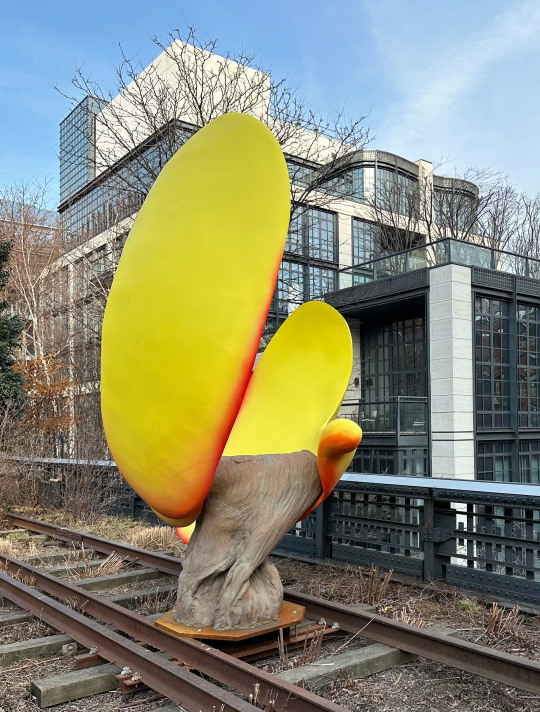
Currently on view on the High Line in NYC is Teresa Solar-Abboud‘s colorful sculpture, Birth of Islands.
From the High Line’s website about the commission-
Teresa Solar-Abboud creates sculptures, drawings, and videos characterized by an interest in fiction, storytelling, natural history, ecology, and anatomy. In her work, she alludes to material entities in states of transformation and the tension between the organic and synthetic, interior and exterior, gestation and birth, and embryonic and advanced. Solar-Abboud wields these tensions as a tool, not to draw binary juxtapositions, but rather to suggest that they co-exist in a quantum world, in a constant flow state of evolution. This is articulated in her work through an interest in and re-imagination of life’s diverse and sophisticated networks—cultural, geological, industrial, and anatomical—and how these systems overlap or sometimes clash.
For the High Line, Solar-Abboud presents Birth of Islands, a new sculpture in her series of zoomorphic shapes inspired by animals and prehistoric life forms. Birth of Islands, is composed of slick, blade-like foam-coated resin elements that emanate outward from the pores of a muddy, gray ceramic stump. When visiting New York, Solar-Abboud was struck by the landscape—building after building rising from the soil in a fight for prominence, just as vegetation in the forest combats for sunlight in order to survive. Birth of Islands refers to this competitive ecosystem, while also evoking human anatomy: two yellow, tongue-like emanations have seemingly tunneled their way from underground onto the High Line. The forms are spoon-like in their appearance, concave or convex, depending on one’s vantage point. The result appears simultaneously post-human and primordial, sophisticated and elementary—a representation of our own unending transformation alongside nature’s ever-evolving state.
This sculpture will be on view through July 2025.
#Teresa Solar-Abboud#The High Line#Art#NYC Public Art#High Line#NYC Art Installation#Mixed Media Art#Mixed Media Sculpture#Public Art#Nature#NYC Art#Sculpture#Environmental Art#Zoomorphic
1 note
·
View note
Text
youtube
Sister Gemini- One Room Apartment
This single above, released in 2024, is from Los Angeles based artist Sister Gemini.
She is opening for Scout Gillett at Gold Diggers in Los Angeles on Friday, 6/6/25.
#Sister Gemini#Los Angeles Music Shows#Music#Scout Gillett#Music Monday#New Music#Playlist#Song of the Day#Youtube
0 notes
Text
youtube
Mogwai- Fanzine Made of Flesh
Every month I listen to the majority of bands and musicians who are playing in Los Angeles and select some for a monthly playlist. It includes a variety of genres and usually newer work by the artist.
The song above is from Scottish band Mogwai‘s 2025 album, The Bad Fire.
Below are April’s selections-
#April 2025 Playlist#April 2025 Spotify Playlist#Los Angeles Music#Mogwai#Music#New Music#Playlist#Spotify Playlist#Youtube#Spotify
0 notes
Text

Cindy Bernhard‘s Dangle, 2024, was part of PLATO gallery’s 2024 inaugural group exhibition, Double Vision.
In a recent interview with Overstandard, she discusses her practice and specifically the use of cats-
Cats and dogs frequently appear in your paintings as stand-ins for humans, adding layers of humor and empathy. What inspired this choice, and how do these animals enhance the narratives within your work? Cindy: I was trained in figure painting, and I was making figure paintings for many years. I found that when painting the figure, the dialog about my work became a conversation about identity politics. In my painting practice, that is not of interest to me. My interests lie in the human experience, not gender, or body type, or the color of someone’s skin. I’m interested in shared human connection, shared emotions like grief, pain, beauty, suffering, and joy. There are days I miss painting the figure and I can see it returning in my work again one day.
With that in mind… What do you think it is about cats that resonates so well with you? Cindy: I love looking for the cats and dogs in old master paintings: they are always so weird and expressive. Even though they are in the background and very small, they have a lot to say. In my work the cats become the main character, I think it adds humor, and it’s easier for people to connect to the cat than a figure, which is interesting. There’s also a song I love, by one of my favorite bands, mewithoutyou. For some reason this part of the song ‘a glass can only spill what it contains’ always stuck with me… A cat came drifting On my porch from the outside cold And with eyes closed, drinking Warm milk from my bowl Thought, “Nobody hears me, nobody hears me As I crept in so soft And nobody sees me, nobody sees me” As I watch six steps off In my mind I would always see this cat creeping along….not wanting to be caught. I think it’s about when we do things in the dark and think no one knows, God still sees.
#Cindy Bernhard#Art#PLATO#PLATO Gallery#Art Shows#Cats#Caturday#Painting#NYC Art Shows#Double Vision#mewithoutyou
0 notes
Text

Tania Figueroa‘s painting Oronym, pictured above, was part of a group exhibition at The Werk Gallery in St. Pete, Florida, in April of 2023.
About the artwork from the artist-
Expressing a point of view feeling restricted. Throwing your truth only between the lines. Not being able to express your thoughts openly because of fear, pressure or prejudice. In that restriction, we feel trapped, we feel with two faces. The one the world wants to see and the genuine face. Like an oronym. You might hear one thing, but what is it really saying?
The artist is currently part of the three person exhibition, Between Worlds on view at The Studio @620, also in St. Pete. The other Florida artists included are Sketzii (Ketsy Ruiz) and Alexa Espinosa (ArttByLexx).
From the gallery-
In Between Worlds, artists Sketzii, ArttByLexx, and Tania Figueroa bring together layered narratives of memory, identity, and cultural connection. Their work moves across genres and materials—painting, digital illustration, and mixed media—to explore what it means to exist in the spaces between home and heritage, past and present, tradition and personal truth. Each artist offers a unique lens through which to view belonging, storytelling, and the way art creates meaning across generations. Sketzii is a celebration of her Puerto Rican heritage and the experience of living within the Latinx diaspora. Her bold, vibrant compositions honor communities that are often overlooked—uplifting stories of cultural pride, displacement, and the longing for connection that spans across geography and time. ArttByLexx’s practice centers on her connection to ancestry and the inward journey of self-discovery. Her practice embraces nature’s rhythms and emotional depth, creating intuitive pieces that blur boundaries between past and present. Through her exploration of joy, grief, and transformation, her art becomes a spiritual and reflective space. Tania Figueroa brings a rich history of movement to her visual art practice. Trained in classical ballet and theater, her work now lives in the textures of mixed media—combining textiles, sand, and paper to evoke memory, place, and care. Her pieces draw on deep personal experience, blending the sensorial and the sacred to reflect both resilience and tenderness.
#Tania Figueroa#The Werk Gallery#The Studio at 620#Mixed Media Painting#St. Pete Art Shows#Art#Ketsy Ruiz#Sketzii#ArttByLexx#Alexa Espinosa#Art Shows#Florida Artists#Mixed Media Art#FBF#Oronym#Painting#St. Pete Art
1 note
·
View note
Text
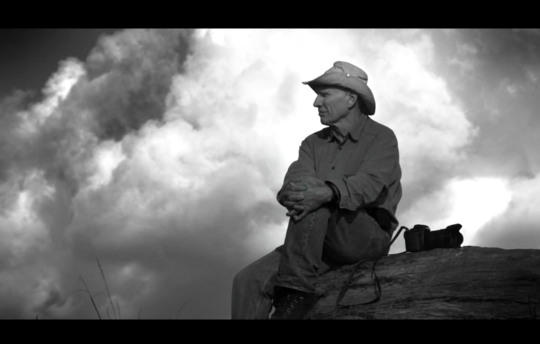
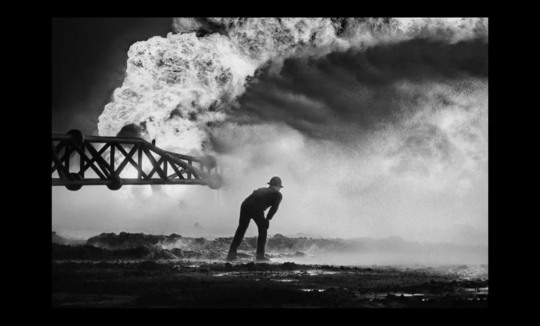
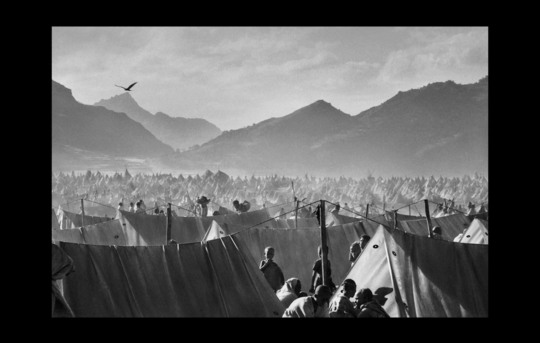

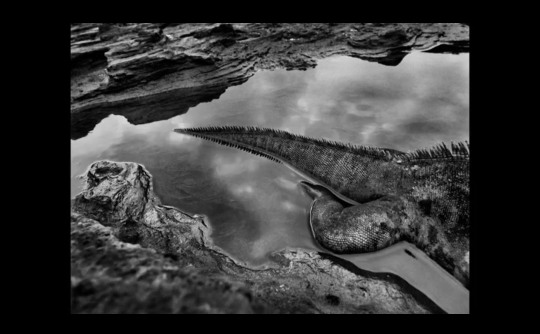
Brazilian documentary photographer and photojournalist Sebastião Salgado passed away on May 23rd at the age of 81. His distinctive black and white images brought attention to previously unseen cultures, devastating humanitarian crises, and the struggles of workers, all around the world. Later, he turned his sharp focus to the remote natural world and its inhabitants.
The images in this post are from the 2014 documentary The Salt of the Earth, co-directed by Wim Wenders and his son Juliano Ribeiro Salgado. The film celebrates the artist’s life and career and focuses on several of his large projects.
Salgado also created Instituto Terra with his wife Lélia in 1998. The organization focuses on planting trees and restoring Brazil's Atlantic Forest. The project began in on his family's farmland, pictured below, before and after the restoration.

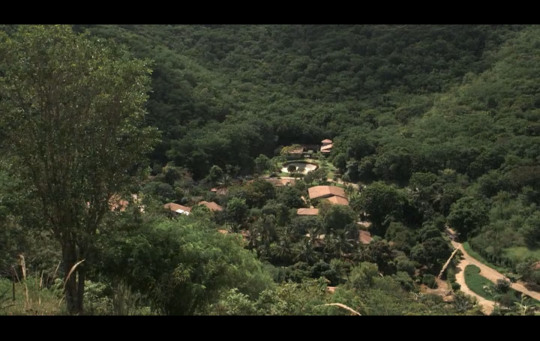
Below are additional images from Salgado’s environmental work seen in the film.




#Sebastiao Salgado#Photography#Art Documentary#Wim Wenders#Juliano Ribiero Salgado#Lélia Wanick Salgado#Instituto Terra#The Salt of the Earth#Documentary#Documentary Photography#Environmental Art#Environmental Photography#Film#Film and Video#Documentary Film#RIP
0 notes
Text



The images above are from Fabric Secrets, Maurice Evans‘ solo exhibition of mixed media paintings, on view at Bridge Art Gallery in Wilmington until 5/31/25.
From the gallery-
Born in Smyrna, Tennessee, Maurice Evans discovered his artistic passion through music before transitioning to visual arts. After studying Fashion Illustration at the Art Institute of Atlanta, he pursued a career that blended bold colors, cultural narratives, and mixed media. In 1994, his independent career took off with a successful exhibition at the Black Arts Festival in Atlanta, leading to national and international recognition. Evans’ work, often incorporating photography, painting, and sculpture, explores themes of music, culture, gender, and politics. His distinctive style has been showcased in numerous galleries, museums, and collections, including Hartsfield-Jackson International Airport and the Hammonds House Museum. Residing in Atlanta, Evans continues to push artistic boundaries, living by the mantra, “Create art for art’s sake,” inspiring artists and audiences alike.
It’s also worth checking out his Instagram account where he posts videos of his process, as well as his most recent work.
#Maurice Evans#Bridge Art Gallery#Delaware Art Shows#Wilmington Art Shows#Art Show#Painting#Mixed Media Art#Art#Mixed Media Painting#Fabric
1 note
·
View note
Text
youtube
Dutch Interior- Fourth Street
This song is from LA band Dutch Interior‘s 2025 album, Moneyball. They will be playing at The Observatory in Santa Ana, California, on 5/29/25.
Fun fact- the band took its name from Dutch Interiors, a series of three paintings modeled from postcards, created by Joan Miró in 1928.
#Dutch Interior#Los Angeles Band#Los Angeles Music#Music#Music Monday#New Music#Painting#Playlist#Song of the Day#Joan Miró#Spotify Playlist#Art Reference#Youtube
0 notes